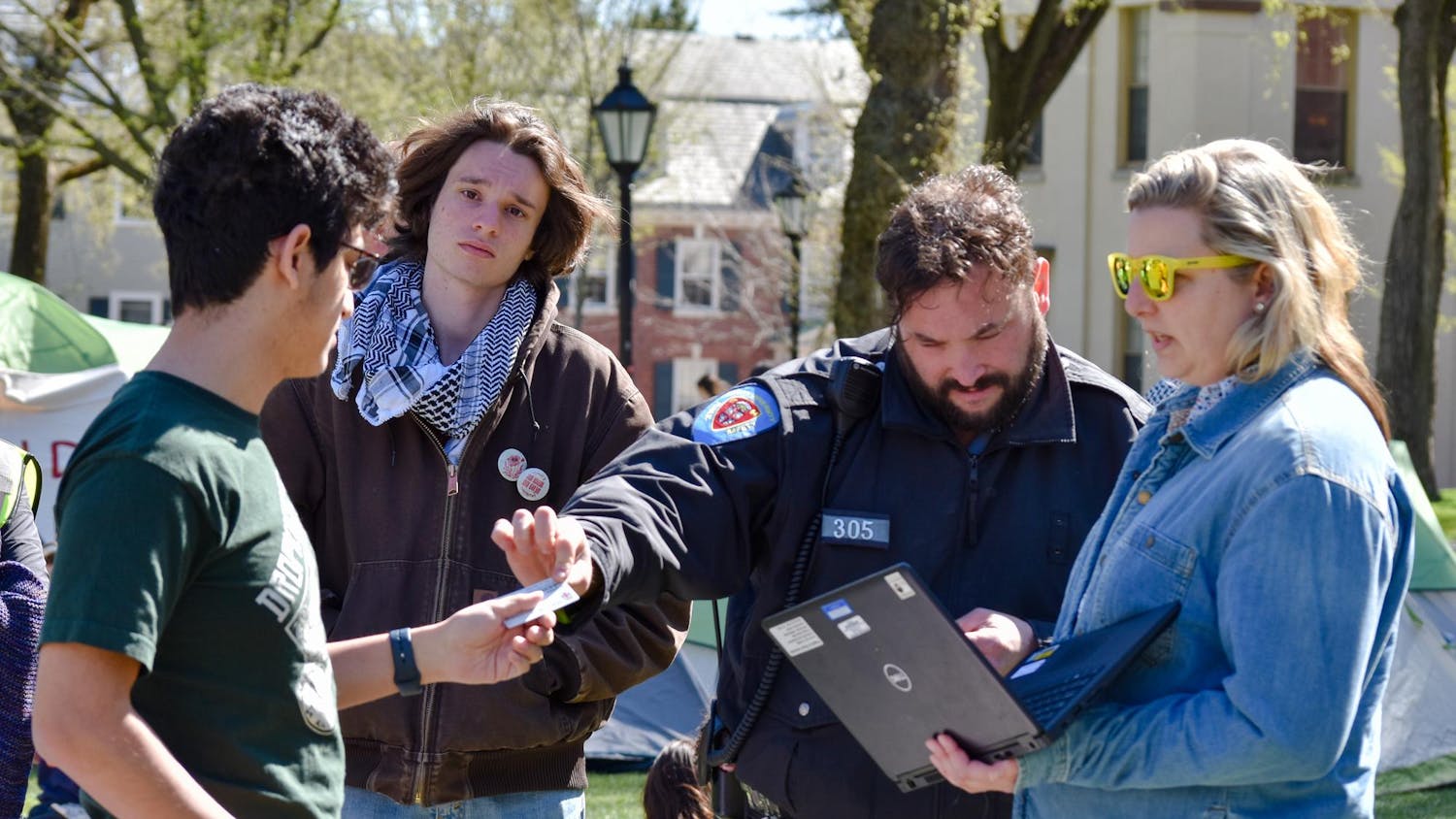When Faunce House re-opens next fall after intensive renovations, students will have more than just comfy chairs and focaccia sandwiches to feast their senses on. The new Stephen Robert '62 Campus Center in Faunce will become home to an original piece of art by a Brown alum.
Which alum — and what piece — will be decided by the University's Public Art Committee, a group of faculty and alums that is responsible for bringing works of art for public display on campus.
Each new or renovated building on campus has 1 percent of its budget allotted for art, said Jo-Ann Conklin, a memberof the committee. The committee meets with the architect to discuss locations within the building to place pieces, compile lists of artists whose work would be appropriate for the space and consider the direction and placement of the work once chosen.
In selecting a piece for Faunce, Conklin said the committee feels that "because this was a student center, it would be great to have work by past students." Faculty members nominated 20 former students, which the committee narrowed to a list of four, three of whom have agreed to submit proposals later this month.
The three finalists — Dave Cole '00, Nina Katchadourian '89 and Sarah Oppenheimer '95 — are all contemporary artists who are considered innovative in both message and media.
"Brown has a smart, inquisitive student body," Conklin said. "In order to make the art excite and be pertinent to them, the more contemporary the better."
Regardless of which proposal the committee picks, the art greeting students each day in Faunce is unlikely to be considered traditional in either presentation or material. Cole is known for his giant knits — produced using such varied improvised knitting needles as loaded shotguns or electric utility poles maneuvered by John Deere excavators — and his commentary on American nationalism and militarism.
Katchadourian, whom Conklin described as "the most eclectic" of the three, said she lets the idea determine the medium she uses for each piece. Her work ranges from genealogical charts of grocery brand characters to subtle alterations of pre-existing natural settings.
Oppenheimer works within a building's structure to recast the view a passerby is afforded, framing it with sculpted wooden panels. Her work distorts perception and creates a view that becomes a second piece of art in itself, Conklin said.
But the circumstances of this particular commission are unique, those involved said.
"Often, a building hasn't even been built yet" when a request for a piece comes in, Katchadourian said. "Faunce is a building I know really, really well."
Cole also recalled his time spent in Faunce during his years at Brown as memorable.
"I remember Faunce being a somewhat threadbare, aging place where I had a lot of amazing conversations with amazing people," he said.
Katchadourian said that while the Van Wickle Gates are the more symbolic entrance to the campus, Faunce is "the practical, lived, actual entrance" as well as "the student hub of campus."
Cole credited Brown with encouraging his interest in art, and said he is excited to have an opportunity to present the school with a piece that reflects its impact on his work.
"Brown made me a smarter artist," Cole said. "The intellectual complexity that I find so important in my work, I trace back to Brown. In order for me to feel good about my contribution to that environment, I would want it to be equally complex."
Katchadourian, who both attended and taught art classes at Brown, also said the mindset she developed on College Hill continues to inform her work.
"Brown's extremely interdisciplinary approach to things has always been a good fit for me and how I work as an artist," she said. "I have an idea and figure out the best way to bring that idea to life. That seems to me to be a very Brown approach to things."
In preparing her proposal, Katchadourian said, she has been re-reading journals she kept as a student. She said she was struck by her questions to herself in the journal and began "feeling that it would be nice to have someone older and more experienced to offer guidance." From this theme, she decided to craft a sound-based piece dealing with the theme of advice.
"It's a fascinating medium," she said. "People come to an art experience often expecting a visual experience," but sound pieces "engage another sense." The piece she will propose "is subtle in its physical presence. It's not going to announce itself. Students will end up encountering the work in a rather intimate way, probably one-on-one."
Cole said he has a tentative idea of what he will propose, but that it could still all change at the last second.
Creating something that will be permanent and encountered on a daily basis has proven to be its own challenge, both Cole and Katchadourian agreed.
"The most successful pieces of public art are accessible enough for the casual viewer but simultaneously sophisticated enough to bring something new to people who see it every day," Cole said. "The meaning shouldn't hit you over the head. Rather, it should be the work of a lifetime to unpack its meaning."
With an original piece of art engaging, watching over or whispering advice to them, Cole said he hopes students passing through the new Faunce House will encounter a space both comfortable and creatively charged.
"The most important moments of intellectual curiosity and development happen outside the classroom," Cole said. "By creating a comfortable environment in the center of campus, it will do a lot to create those moments."




